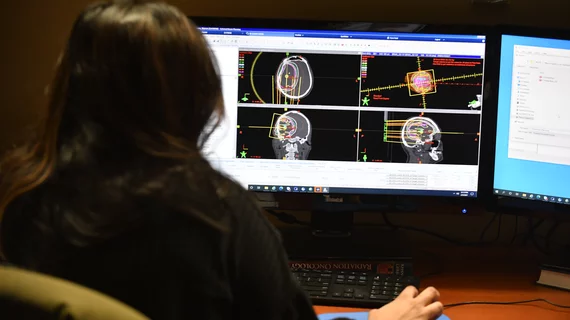Remote radiologists prioritize financial gain when choosing reads: 2 possible fixes
Remote radiologists working for hospitals appear to prioritize financially lucrative studies over more urgent alternatives, according to a new analysis.
This may be leading to critical patient care delays and additional unnecessary costs. The findings warrant possible remedies to improve efficiency and turnaround times, experts with West Virginia University wrote in the Journal of Operations Management [1].
“This research provides evidence that an intense focus on productivity as driven by the RVU may have unintended negative consequences on the level of service radiologists provide to hospitals—and ultimately to patients,” Bernardo Quiroga, PhD, an associate professor of supply chain management at WVU, said in a Tuesday, May 16, announcement from the school.
For the study, researchers analyzed information representing more than 2.1 million imaging exams completed in a popular radiology workflow program between 2014-2017. The data set spanned 251 procedure types, performed across 62 hospitals, and read by 115 radiologists. The platform connects hospitals and off-site radiologists, who can select studies to process from a common pool. Reads ranged from “routine,” denoting no urgency, to “hyperacute,” necessitating immediate attention. In the middle were “expedited” studies (low clinical urgency but higher operational priority—i.e., if a patient is waiting on a scan before discharge) and “stat” (indicating conditions that are medically acute but not life-threatening). Roughly two-thirds of studies in the analysis were labeled as stat, which should take priority after radiologists address those that are hyperacute.
The first major finding: Lower priority tasks with a higher expected pay-to-workload ratio were discovered to have significantly shorter turnaround times. Reading times were relatively short compared to overall turnaround times, the authors noted. “This result implies that the reduction in turnaround time for nonurgent, financially attractive studies is due to a reduction in wait times for them to be picked up by a radiologist,” the authors noted. Quiroga et al. also reported a second major finding: More financially attractive, low-priority tasks were strongly associated with longer turnaround times and an increased probability of delay for higher priority tasks.
“We discovered that the expedited priority class contained the highest percentage of delayed studies, and those delays could be quite large,” Quiroga said in the announcement. “The workflow platform provider is contractually bound to achieve a certain level of turnaround time, so delay is an important performance measure.”
The research team emphasized that radiologists were not purposely pushing aside medically urgent exams with high clinical priority. Rather, they often neglected those with medium-level “administrative” and “operational” priorities.
Quiroga noted that remote radiologists are typically paid on a “piece-rate compensation scheme,” earning money for each task regardless of how long it takes. They must meet annual productivity targets, grabbing bonusses for exceeding them. And amount earned per study is measured in relative value units.
“In recent years, a strong drive towards evaluating radiologists’ efficiency in terms of their daily RVU output has generated considerable criticism from the radiology community, which says those metrics lead to an unhealthy work environment and increase mistakes,” Quiroga said. “On top of that, imbalances between Medicare and Medicaid pay rates for tasks performed and the actual workloads involved in those tasks have been the subject of extensive discussion within the medical community and especially radiology.
The research team suggested two possible nonfinancial countermeasures to address these trends. Intelligent scheduling, for one, could establish balanced workloads among different radiologists, possibly tied to their specialization or preferences. Hiding studies to selectively limit which ones are available to read and instead emphasizing the high-priority ones is another option, the authors noted.
“That approach takes advantage of the platform’s centralized nature and would be invisible to the radiologists. And, as long as the functionality is well-designed, that solution would be essentially costless,” Quiroga said.

